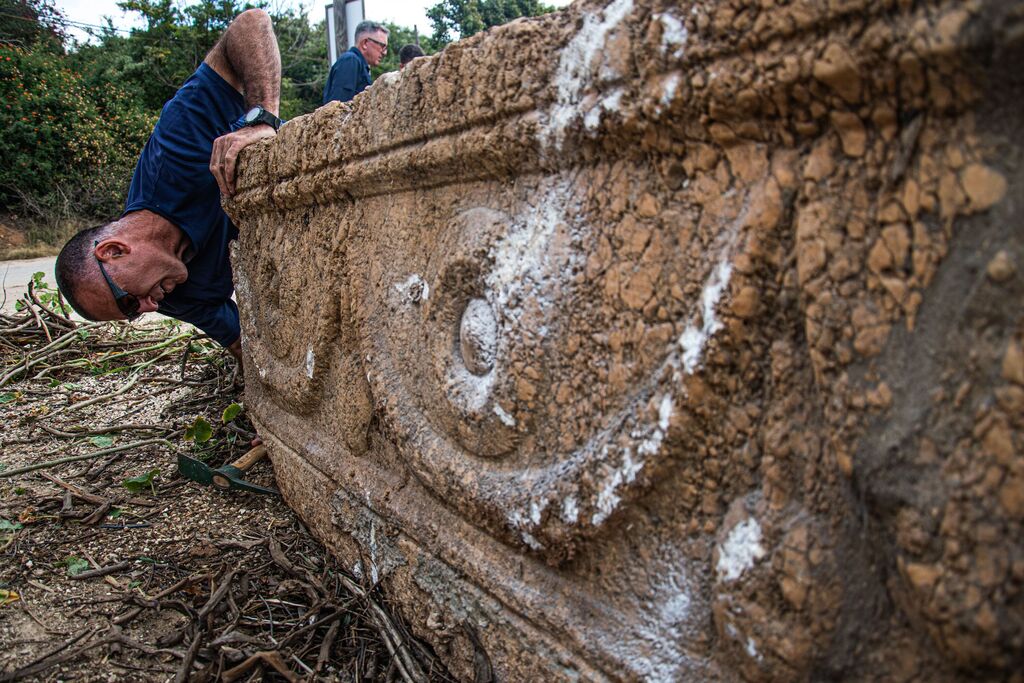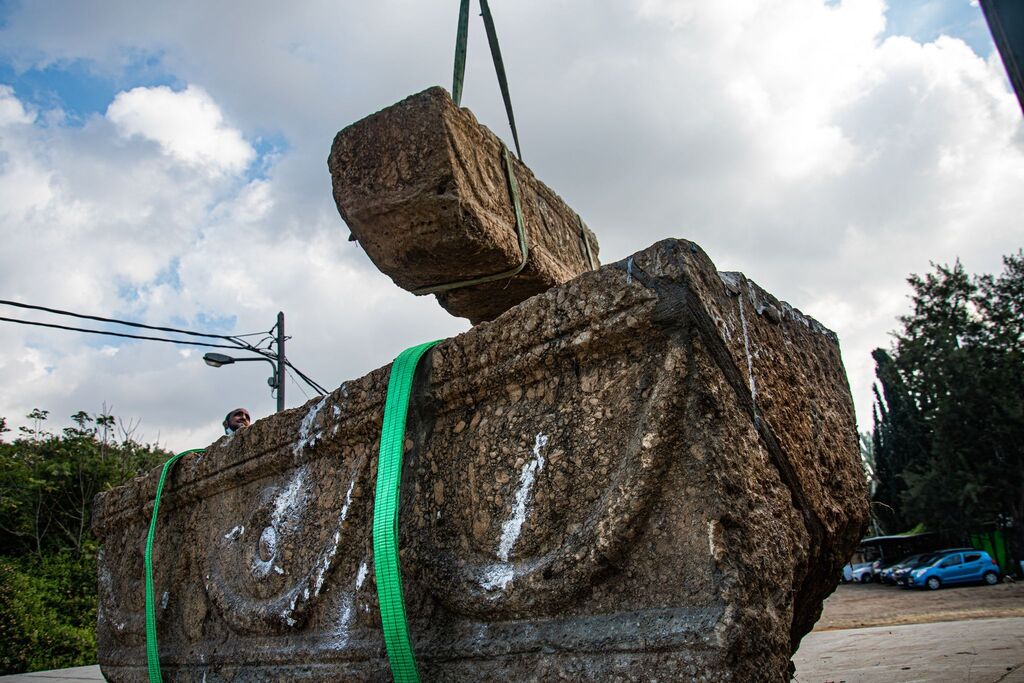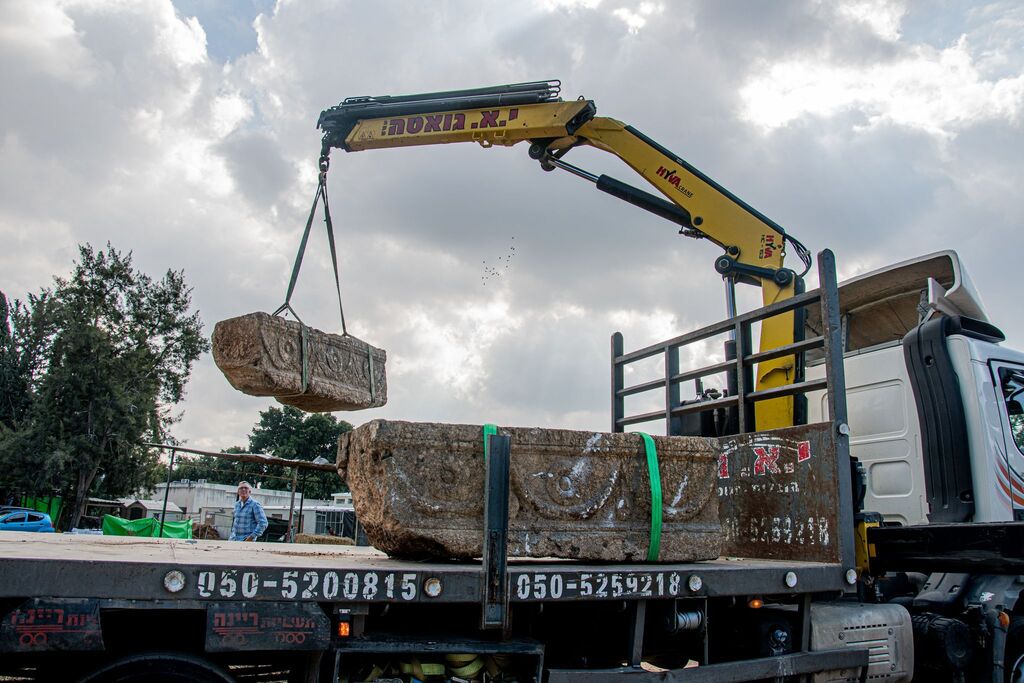Two ancient stone coffins, known as sarcophagi, were unearthed last week during construction work at Ramat Gan Safari Park.
Workers made the discovery while building a new addition to the park's wildlife hospital. The new complex, designed to provide advanced veterinary services for birds and mammals, includes a specialized operating theater and a large bird nursery that will provide quiet, heated housing for the frequent feeds needed during the chick-rearing seasons.
3 View gallery


Man inspects sarcophagus unearthed at Ramat Gan Safari Park
(Photo: Israel Antiquities Authority)
Veteran safari workers present at the time said that the coffins had been found years ago in the area of the safari’s parking lot.
At the time, the sarcophagi were moved to a location near the veterinary clinic and the African savanna zone, but they were forgotten over the years and became buried under sand and thick vegetation.
When work on the new wildlife hospital began a few days prior, the contractor working in the area began digging and, suddenly, Rami Tam, head of the African savanna zone, noticed the two coffins jutting out of the soil.
He quickly called animal health and management director Shmulik Yedvab, who came to see the finding and contacted Alon Klein and Uzi Rothstein at the Israel Antiquities Authority’s Theft Prevention Unit.
Hardly believing their eyes, the inspectors were astonished to see sarcophagi of this kind at the Safari Park. After a thorough examination, they excitedly confirmed the unique finding’s age.
3 View gallery


Two sarcophagi unearthed at Ramat Gan Safari Park
(Photo: Israel Antiquities Authority)
Based on the stones and their ornate decoration, the sarcophagi were intended for people of high status who were evidently buried near the Safari Park.
According to Israel Antiquities Authority archaeologists, the sarcophagi are roughly 1,800 years old and date back to the Roman period.
They are ornamented with symbolic discs – to protect and accompany the soul on its journey to the afterlife – and flower garlands, often used to decorate sarcophagi in the Hellenistic period as well. Between the garlands are oval blanks, which the archaeologists believe were originally intended to be filled with a customary grape-cluster motif, but for some unknown reason, the work remained unfinished.
The sarcophagi, made of local stone – probably from the Judean Hills or Samaria – are locally-produced imitations of the prestigious sarcophagi made of Proconnesian marble from the Turkish island of Marmara.
3 View gallery


Crane lifts sarcophagus unearthed at Ramat Gan Safari Park
(Photo: Israel Antiquities Authority)
Found together, the two sarcophagi bear identical ornamentation and they may have been made for a husband and wife, or for members of the same family.
The exact provenance of the sarcophagi is unknown, but they were probably buried near the Safari Park, in the region of Messubim – the site of ancient Bnei Brak in the Roman period, known to us from the Passover Haggadah.
The wealthy owners of the sarcophagi, buried with their personal grave goods, had no idea that the coffins would find a place of honor alongside giraffes, elephants and a bird nursery.
The sarcophagi were transferred on Tuesday to their rightful location in the Israeli National Treasures repositories.

